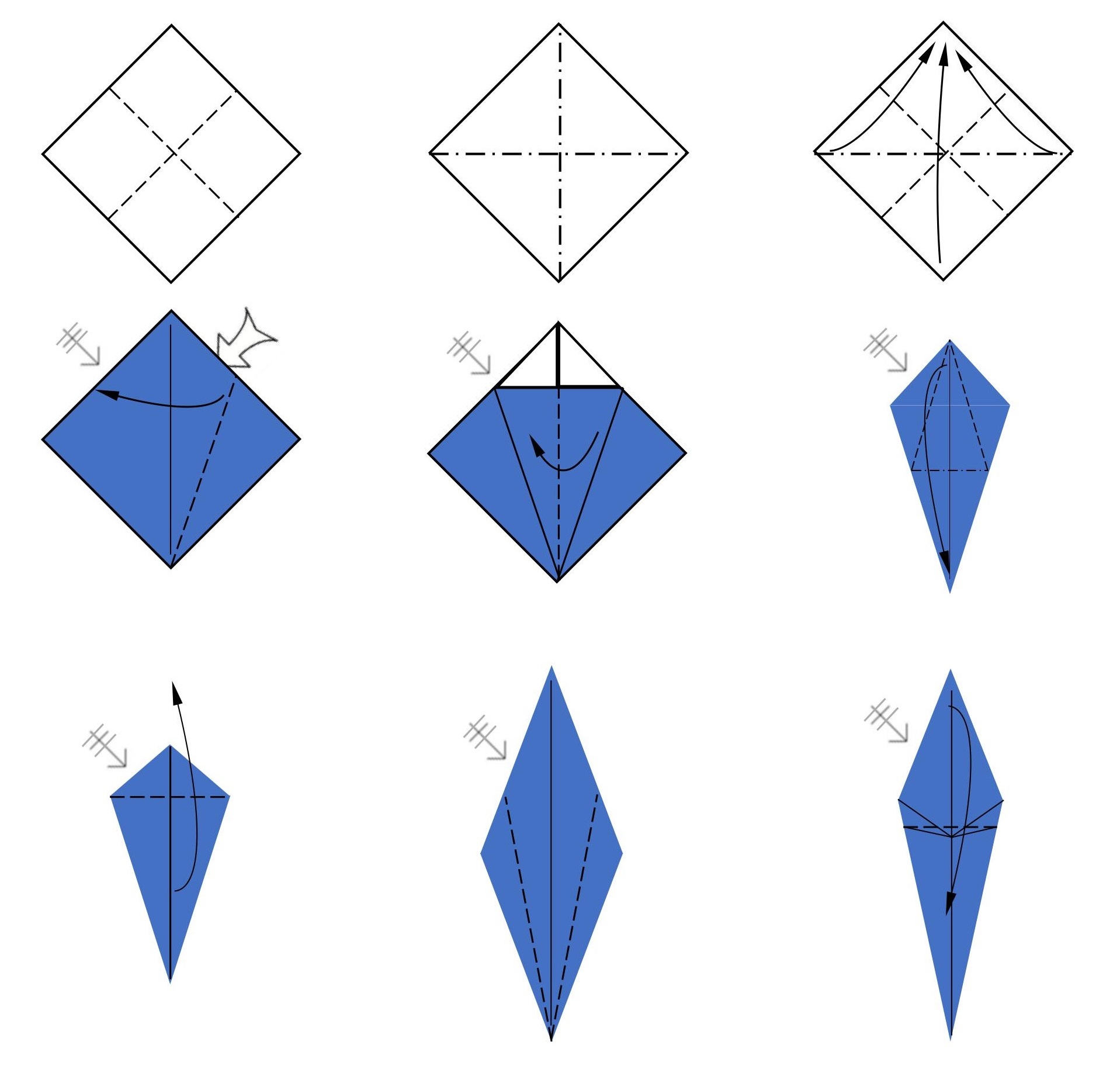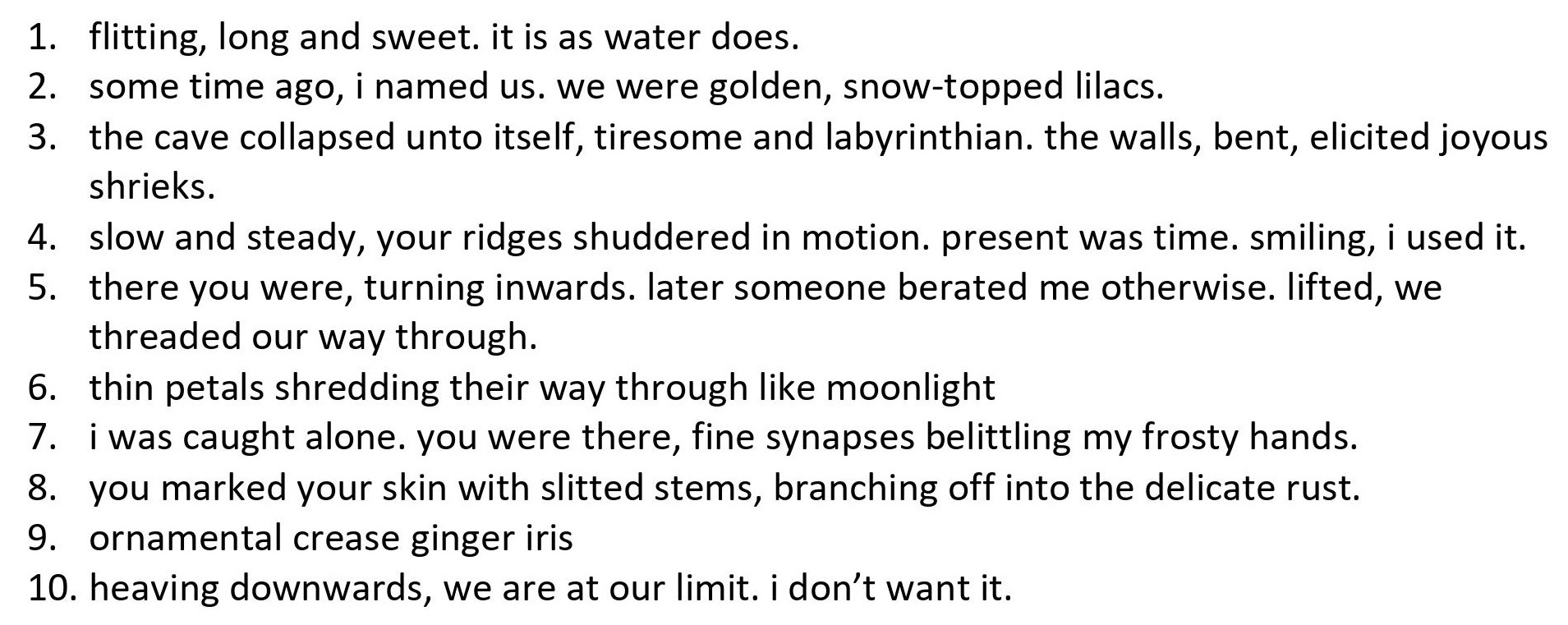

A Journal of Hybrid Literature and Art


What was your process for creating these pieces?
The piece “manual” was the first of the three works created and was my first foray into how to combine origami with poetry. I thought that it would be intriguing to see how something that began as a set of instructions could begin to slowly morph into more poetic writing. I also created the model that is shown being folded in “manual”, a small heart that only comes about at the end of the piece. Much of the process of “manual” revolved around figuring out how to suitably juxtapose the diagrams with the placement of the writing, so that they could both exist in relative harmony to each other. Ideally, you would be folding alongside with it, which is also the case for “blossom”, depicting the folding of an iris. Here, as the instructions are replaced by the poem itself, the only way to fold it is by following the visual elements, which are documented in “techniques”. I created “techniques” by taking inspiration from origami books which normally have a set of general introductory folds that are used in folding the origami models that will come about in the book itself. All diagrams were made in Word using different shapes and lines in the “insert” section, which was probably the most painstaking part of the process.
What is the significance of the form/genre you chose for this work?
Origami is something that I have been fascinated by for many years, but it was only recently that I began to experiment with how I might connect it to my own writing. As I began to delve further into concrete poetry, I started considering how to extend the poetry from beyond simply the page and visuals in front of you to the actual physical aspect of the page. Many of these origami poems give you the option of folding something alongside the piece that you are reading, and often urge you to do so in order to have a better understanding of the piece as a whole. In this sense, the writing takes on another dimension in reality and one can also discuss how every experience of reading the poems will be different as every person folds differently. Therefore it also becomes a unique experience that may take some more or less time to process.
What is the significance of this work to you?
Of course, it is not just the origami aspect that is meant to be touched on through these pieces; I never intended origami to be the sole feature to marvel at in “blossom,” “manual,” and “techniques.” The lines contained within them are significant to me in terms of the emotions I felt at the time of their composition, and the reason why I chose origami as my mode of communication was that I thought that the resoluteness and completeness of origami presented an interesting juxtaposition to the relatively uneven processing of certain emotions like anger or heartbreak. I have always found that the time I spend folding origami produces the calmest and least bothered mental state I ever feel, as there is nothing to focus on but the quiet folding of the paper. It then becomes fascinating to see how the easygoing sense of origami can be stretched thin and at times become fractured and transcendent through poetics.
Samuel Haecker is a rising senior attending New York University majoring in English with honors, along with a minor in Creative Writing. Born in New Hampshire to a Colombian mother and German father, he lived in North Carolina and Frankfurt, Germany before moving to New York to attend NYU. He writes visual and experimental poetry and prose, and some of his favorite authors include Jorge Luis Borges, Franz Kafka, Italo Calvino, and Donald Barthelme. When he's not writing, you can find him folding origami or playing bass.